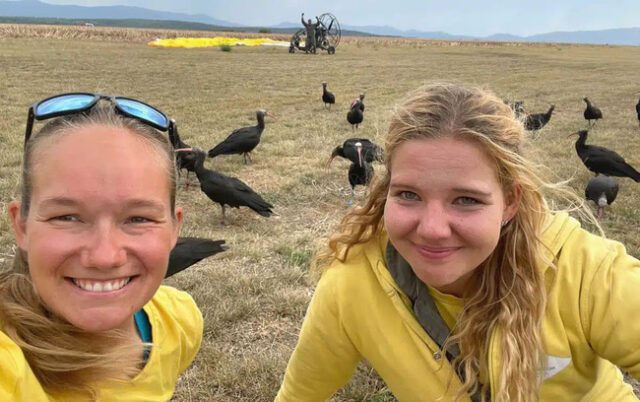
Scientists in Austria are embarking on an extraordinary mission to help nearly extinct northern bald ibises learn to migrate. In August 2024, conservationists from the Waldrappteam began guiding 36 hand-raised northern bald ibises from Austria to Spain, a journey spanning 1,740 miles over up to 50 days. This marks the 17th time the team has undertaken such an endeavor. The scientists, flying in ultralight aircraft, play a crucial role in guiding the birds, with two foster parents, Helena Wehner and Barbara Steininger, leading the way. Their unique bond with the ibises is evident as they call to the birds midair, guiding them along their path. Helena Wehner notes the deep connection she feels with the birds, likening the experience of flying with them to entering another world, where the birds acknowledge their human guides with subtle gestures mid-flight.

The northern bald ibis, once widespread across Europe and North Africa, has been nearly extinct in central Europe for centuries. Through the efforts of the Waldrappteam, the species has been downgraded from critically endangered to endangered. However, challenges remain. Without migratory knowledge from wild ancestors, the birds rely on humans to guide their migration. Inspired by the pioneering work of “Father Goose” Bill Lishman, the team, led by biologist Johannes Fritz, has been teaching the ibises to migrate for years. Despite the occasional setbacks, such as wayward birds and shifting migratory schedules due to climate change, these missions offer a hopeful future for the species. By adapting to environmental changes and continuing to innovate, conservationists are helping to preserve not only the northern bald ibis but also other species threatened by climate change.



















